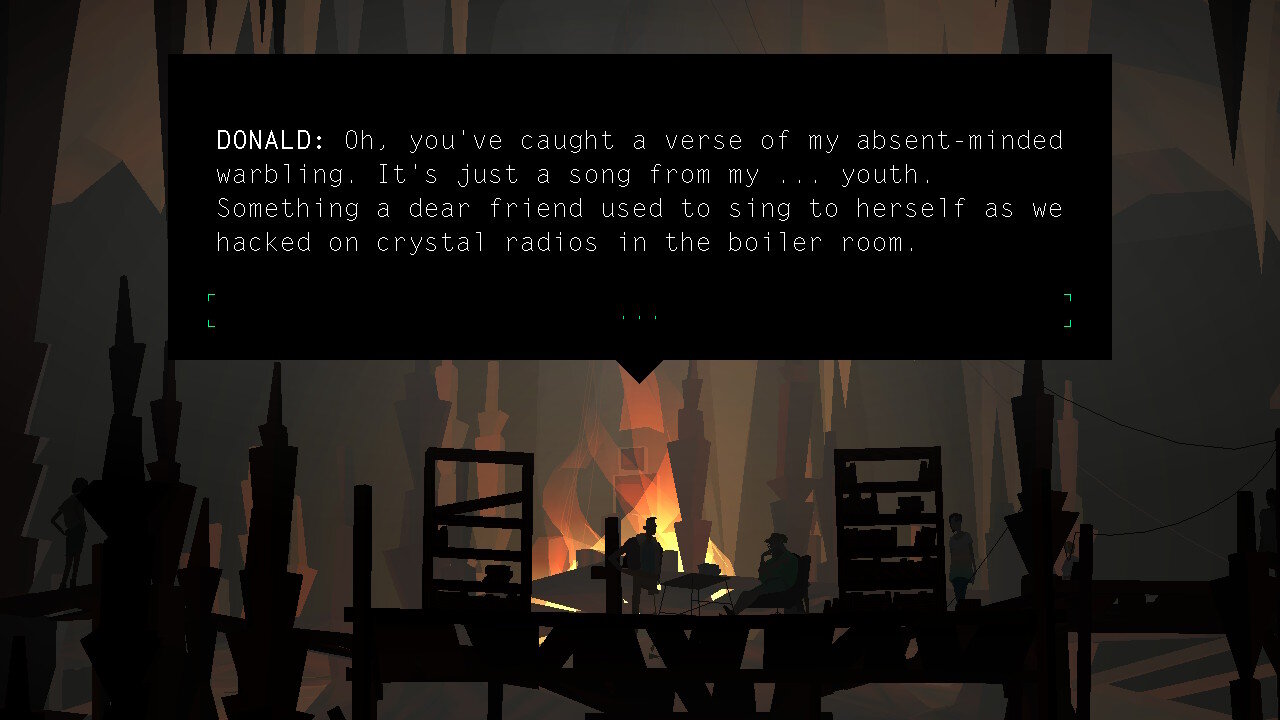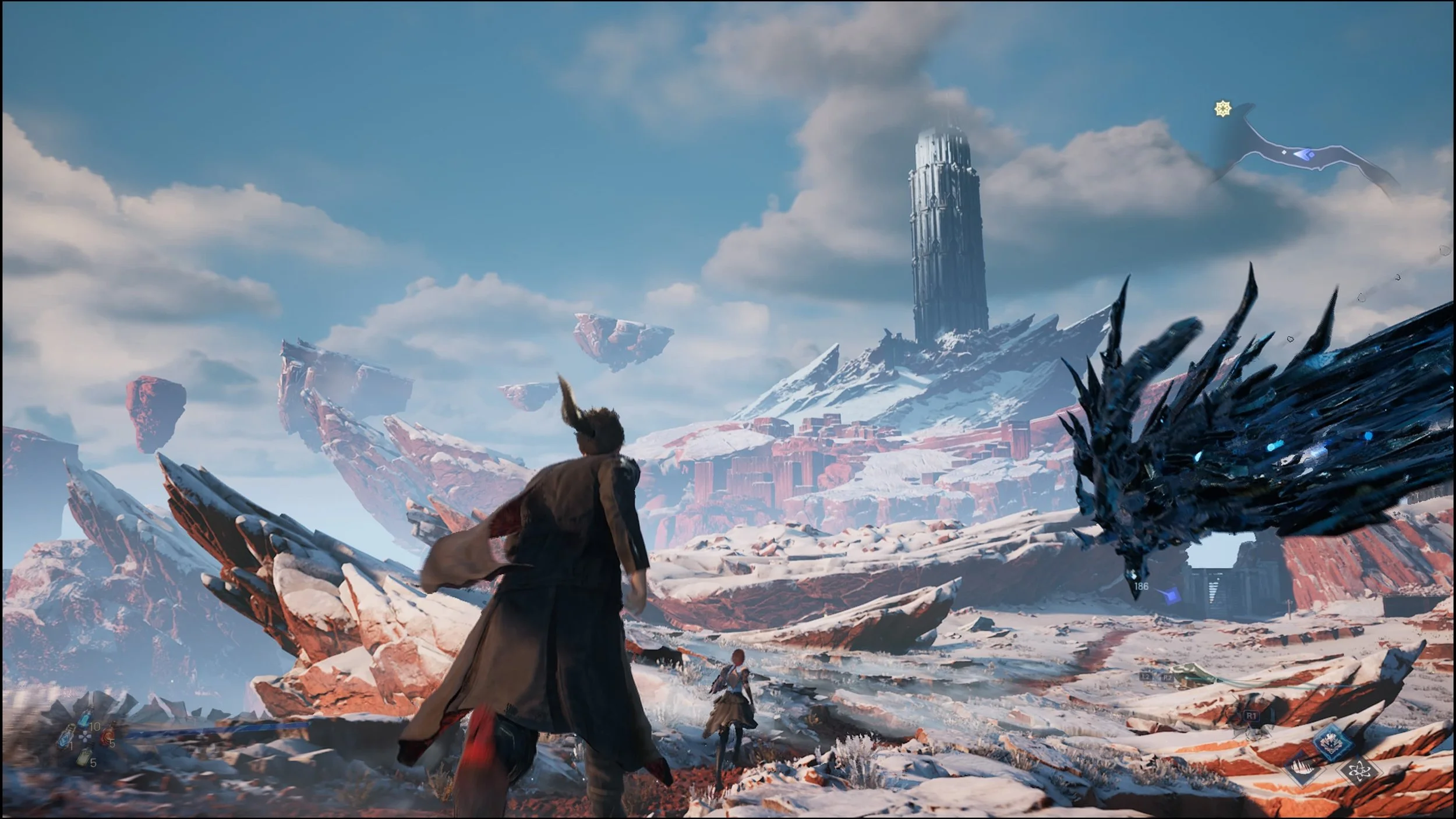Kentucky Route Zero: TV Edition (Switch) Review - This Game Belongs In An Art Gallery
/If the “are videogames art?” debate of the 2010s had not been settled, Kentucky Route Zero would have dropped the mic on the now and future potential of the artform, delivering an enchanting one-of-a-kind interactive experience that blurs the lines between fine art and videogame, and any and all preconceived genre and media definitions in between.
Originally a Kickstarter game released in installments beginning in 2013 that has finally reached its completion in 2020, Kentucky Route Zero is less a video game and more an interactive existential thesis on life, death, and all of the messy stuff that happens in between. It is in parts a visual novel, theater piece, art installation, philosophical meditation, meta-commentary on the very nature of art and the inherent artistry of being, a series of finely-tuned soundscapes, and most importantly, it somehow manages to combine a series of studies on flawed characters with pointed commentary on modern civilization and mankind’s tenuous relationship with the natural world, all without losing sight of the human elements at play, and the inner worlds of its characters.
Character-driven magical realism
Truck driver Conway arrives at a gas station on the 65 Freeway in search of an address to make a delivery of antique furniture: 5 Dogwood Drive. The attendant, a mysterious loner named Joseph, tells him he’ll have to take the Zero to get there. Odd events happen all around but rarely draw much scrutiny from the characters, letting the player understand contextually that this world operates on its own reality.
Taking a page from the game’s most immediately obvious influence, Gabriel Garcia Marquez’s magical realist novel One Hundred Years of Solitude, the lines between living and dead, past and present, magic and reality are as dreamlike and fluid as the ethereal fibers between the worlds - the roads topside are surely odd by our standards, but the deeper the players descend into the titular subterranean Route Zero, the weirder, wackier, and more introspective it all gets. David Lynch has been widely cited as an inspiration, but I find most similarities to be on the surface level, as Lynch is more interested in atmosphere than characters. Kentucky Route Zero rarely goes for shock value; despite all the flights of fancy, its characters and themes are grounded, and its visuals are more often striking and pleasing than raw and haunting.
In Kentucky Route Zero, there are no minor characters. An NPC manning a floating fuel barge waxes poetic about the serenity that comes with being forgettable. A moment later, a patron just gassing up shares how their pity for a firefly saved their life when they fell asleep drifting atop a raft. Every one of the major characters is struggling with personal crises, and you, the player, get to interpret how they choose to deal with them, for better or worse. The dialogue choices you make almost never affect the outcome of the story, but they can and do change your inner experience as a player. The game developers understand that people can either integrate or disintegrate, rising to personal challenges or giving in to baser impulses. Some just want the comfort of a steady job. Others travel in search of adventure. Some lament over the disappearing old world. A young child, Ezra, seeks his lost parents and lives with Julian, a 30-foot-tall bald eagle whom he claims to be his brother. Typical stuff.
Finding Truth in the Space Between Spaces
The game was released in various chapters, with art installation interludes in between. These have been arranged in order for Kentucky Route Zero’s “TV Edition”. The Entertainment, a VR installation developed around the Oculus Rift with echoes of Waiting for Godot and Charles Bukowski’s Barfly, puts the player in the eyes of a silent bar patron who watches a tense, empty haunt descend into a heated discussion on usury that ends with a chilling indictment of our debt-based economic system. Chapter III’s The Hall of the Mountain King reminded me both of Citizen Kane and Charlie Kaufman’s Synecdoche, New York with its focus on a lone genius dwelling fitfully with his aging, imperfect creation, a grand design of a simulacrum that serves as little more than a sad testament to a failed experiment, an empty life, and unrequited love.
Tragedy, abandonment, and death are major themes in Kentucky Route Zero, but to simply say that Kentucky Route Zero is art with a conscience and leave it at that is to do it a disservice. Writer/director Jake Elliott and developer Cardboard Computer wanted it all - to have their proverbial cake and eat it, too. This strong of an impulse to create on such an ambitious scope would usually be a recipe for disaster for any developer, let alone an indie developer, but Kentucky Route Zero is meticulously and lovingly crafted, and it’s clear that it has been polished by perfectionists.
A video version by Reviews Editor Joseph Choi of his review on the Switch port of Kentucky Route Zero.
Rather than providing the regular sense of challenge one might normally expect from a video game - that is, the challenge of overcoming obstacles, puzzle-solving, precision and reaction time, etc., Kentucky Route Zero is challenging in the sense that a truly novel work of art is challenging. It pushes at the very boundaries of the art form and asks you to follow along with it. It tantalizes in its slow unfolding of information, with flashbacks, seemingly throwaway lines of dialogue, and new revelations recontextualizing prior knowledge and expanding central themes. And did I mention that the game is funny in both its absurdity and its self-awareness?
There’s a Bureau of Reclaimed Spaces, an organization that not only has a floor populated by bears, but takes old, abandoned places and finds new uses for them. One amazing installation has you using an in-game landline telephone to navigate a guide to a vast and strange underground space called the Echo River. Kentucky Route Zero does interesting things with time. There are multiple points where you will realize that your actions as a player are occurring in the past tense; that is, they’re being watched in the future by chattering characters watching or transcribing video footage. The first instance of this occurs in a living museum where two protagonists reconstruct their own childhoods from memories of old structures, adding further temporal layers to the proceedings that create the effect of drawing the player deeper into the rabbit hole of its persistent world-building.
A Minimalist Masterpiece, Meticulously Molded
Special mention must be made of Ben Babbitt’s exceptional soundtrack, which is layered and clearly aided and mixed by a master of ‘80s analog electronics. The ambient score and sound textures are sometimes contrasted with folk and gospel music, a stirring, show-stopping performance, and alternately Zen and cacophonous soundscapes adorning all manner of spaces, depending on the moods and tones at work in each scene. Kentucky Route Zero boldly features analog art and textures. Playing its delicately-crafted soundscapes will attune your ears to idling engines, birdsong, static, warbled magnetic tape, raindrops both soft and heavy, and to other wonders I’d rather leave unspoiled.
Tamas Kemenczy's art style is minimalistic. Character models are devoid of faces, but the mise-en-scene is so highly stylized, and the philosophical discussions so involving, you’ll hardly notice. Navigating the titular Route Zero is like turning a combination lock. The game dares you to dig deeper in order to unlock its easter eggs - character bits and world-building - and the writing’s so good, it’s hard to resist.
I can’t get over the writing in this game. Your dialogue choices echo back in surprising and rewarding ways. Characters can connect deeply, or miss finding the right dots and fall into self-pity. A suffering character can have their spirits lifted by a sympathetic soul, only to have the opportunity to return the favor later on, or pay it forward. Replayability is therefore built into the title, and this is the first game I’ve played in ages where I’ve been not just curious but eager to see what magic lies behind alternate dialogue options.
Hope, or An Elegy? It Depends On Your Point of View
There are exchanges or even individual lines of dialogue in Kentucky Route Zero that show more depth and substance than a 60+ hour AAA game might muster throughout its entire runtime. It sometimes feels like a choose-your-own-adventure title, except instead of choosing how the story progresses, you choose how the characters internalize the story, environment, and their interactions, which sounds restrictive in theory, but in practice makes the whole experience both fresh and infinitely more satisfying.
Because it is rather obtuse at times, I can’t wholeheartedly recommend it to everyone, but if you’re anything like me and you love carefully-constructed, paradoxical art that is enlightening and entertaining, haunting and hopeful, melancholy and magical, perceptive and pointed, you might really fall in love with the existential irreverence of Kentucky Route Zero.
9/10
Highlights
Exceptional writing, storytelling, and worldbuilding
Unforgettable characters, music, and scenes
Incredible minimalist visual presentation augmented by rich, layered soundscapes
The perfect length, with a playthrough lasting between seven to ten hours, with tons of Easter Eggs
Not for everyone with its sometimes obtuse narrative structure
No real difficulty or challenge other than what you bring to the table
What I’ve Played
Beat the game once and replayed several acts for alternate dialogue options.
Spent ten hours playing total.


















SEGA and Ryu Ga Gotoku Studios put a ton of love and care into Yakuza Kiwami 2, and it runs flawlessly on Switch 2. If you’re like me and itching for a reason to take a plunge into the Yakuza universe, there’s no better time than the present.